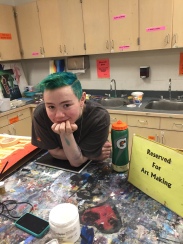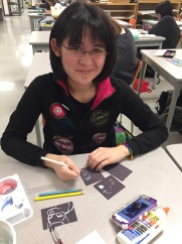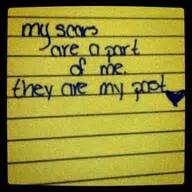
Today marked our the final art therapy based project, sponsored by my Spectrum club’s DEHR grant, for the 2016-2017 school year. For information on past projects please check out the following links:
Heart of A Community: BCHS Students Fill Their Hearts
ART THERAPY: We All Wear a Mask
For this final exercise we decided to try an art trading card technique. Art trading cards, are similar to hockey cards, or pokemon cards. The image on the front represents something about a person. The back of the card provides a name and a few details about the person it represents.
Based on our success with past project, we chose to make this a multimedia task with minimal instruction so that our students had plenty of opportunities for personal reflection.

Students were then asked to complete 3 cards.
- To keep
- To trade
- A final card to contribute to the BCHS commemorative collage.
*although we allowed complete freedom for the first two cards we asked the students to base their third card on what it means to be a member of the Bishop Carroll community

With Spotify “tunes for the coffee bar” channel streaming in the background. We provided our students with two hours to work on their projects.
The results were amazing.
We are waiting for the last few cards to come in and then we are planning to mat the cards in a single frame in order to create a legacy piece to remember not only Bishop Carroll’s 45th anniversary, but also the year we were able to collaborate between art and counselling thanks to our amazing DEHR grant.

Thank you ATA.
Sincerely
Mrs. Luong




















